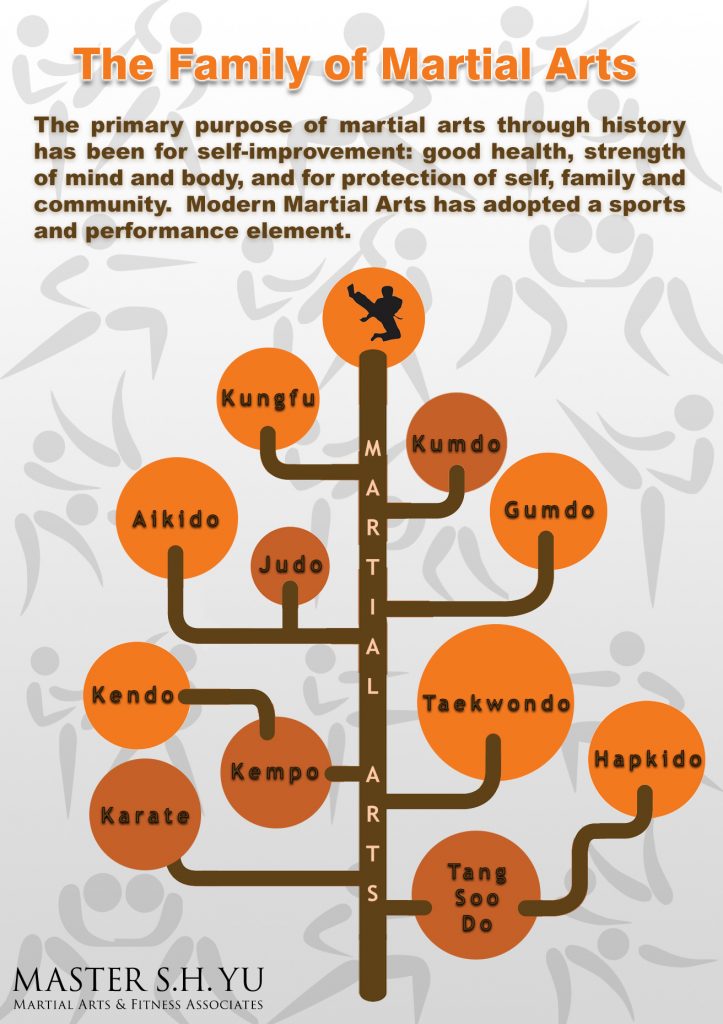Explore The Fascinating Evolution Of Martial Arts, Tracing Its Beginnings From Old Practices To The Innovative Approaches Exercised In Modern Times. Disclose The Enigmas That Lie Within This Enduring Technique
Explore The Fascinating Evolution Of Martial Arts, Tracing Its Beginnings From Old Practices To The Innovative Approaches Exercised In Modern Times. Disclose The Enigmas That Lie Within This Enduring Technique
Blog Article
Material Author-Vilhelmsen Valentine
Step into the world of martial arts, where ancient origins and modern techniques clash in an exciting trip of self-control and self-discovery.
As you explore the background and advancement of this exciting art kind, prepare to be captivated by the cultural impacts, technical innovations, and extensive ideology that have actually formed it over centuries.
From the battlefields of ancient people to the training premises of today, martial arts have stood the test of time, frequently adapting and growing.
Each strike, each movement, carries with it the weight of countless years of tradition and knowledge, gave through generations. This is a story of strength, of warriors that looked for not just physical prowess, yet also self-confidence and consistency.
Join us on this amazing expedition as we uncover the keys, the tales, and the transformational power of martial arts.
Prepare yourself to be motivated, tested, and for life changed by the history and evolution of martial arts.
Cultural Influences on Martial Arts
As you check out the background and evolution of martial arts, you'll swiftly find the fascinating ways in which cultural influences have actually formed these fight techniques.
From the old worlds of China and India to the extra recent growths in Japan and Brazil, martial arts have actually been heavily influenced by the societies in which they came from.
For instance, Chinese martial arts, such as Kung Fu and Tai Chi, are deeply rooted in the ideology of Taoism and the principle of Yin and Yang.
In contrast, Japanese martial arts, like Martial arts and Judo, mirror the samurai warrior customs and the values of technique and honor.
Similarly, Brazilian fighting style, Capoeira, incorporates components of African dance and songs, reflecting the cultural heritage of African servants in Brazil.
These cultural influences not only give each fighting style its unique qualities yet also provide a deeper understanding of the historic and social contexts in which they advanced.
Technological Improvements and Martial Arts
With the increase of innovative weapons and ingenious training tools, you have actually had the ability to improve your abilities and adapt to the ever-changing combat landscape.
Technical advancements have actually reinvented the way martial arts are exercised and instructed. Virtual reality simulations now permit you to train in practical battle circumstances without the threat of physical injury. High-speed video cameras catch every action, allowing you to examine and ideal your techniques. Wearable devices check your heart rate, breathing, and muscular tissue activation, providing instantaneous responses on your efficiency.
Additionally, the advancement of customized equipment, such as resistance bands and dexterity ladders, has enabled you to improve your rate, strength, and agility. These technical developments have not just made training more reliable yet have actually also pushed the limits of what is feasible in martial arts, allowing you to get to new heights in your method.
The Ideology and Concepts of Martial Arts
The philosophy and concepts of martial arts are deeply rooted in shaping your frame of mind and instilling discipline, focus, and regard in your technique.
1. https://martial-arts-and-boxing-n65938.wssblogs.com/29952560/look-into-the-diverse-universe-of-fighting-styles-to-improve-your-fitness-and-total-wellness-launch-your-internal-warrior-and-take-the-initial-step-towards-ending-up-being-a-healthier-and-more-robust-individual-today of thinking: Martial Arts shows you to create a solid and durable way of thinking. It allows you to conquer obstacles both on and off the floor covering, pressing your limitations and standing firm despite misfortune.
2. Self-control: Martial Arts needs discipline and self-control. With click this over here now and adherence to rigorous regulations and techniques, you learn to control your impulses and create a strong work values.
3. Emphasis: Martial Arts needs extreme emphasis and concentration. By training your mind to be present in the moment, you boost your capacity to react quickly and efficiently throughout combat circumstances.
4. Regard: Martial Arts emphasizes respect for oneself, instructors, training companions, and opponents. It educates you to value the skills and experiences of others, fostering a feeling of friendship and gamesmanship.
Final thought
Congratulations on finishing your trip via the captivating world of martial arts! Throughout this exploration, you have actually experienced the abundant history and remarkable evolution of these fight techniques.
From their old beginnings to the contemporary techniques we see today, martial arts have been formed by cultural influences.
The combination of technology has actually additionally played a considerable function in reinventing the method martial arts are taught and exercised in the here and now day.
However, it is very important to remember that martial arts are more than just physical combat. They incorporate extensive ideologies and assisting principles that surpass the plain act of fighting.
Take https://dallasescny.bligblogging.com/30456982/assessing-the-distinctions-between-martial-arts-and-self-defense-an-overview-to-their-key-characteristics to reflect on this obsolete experience and appreciate exactly how the legacy of martial arts continues to grow in today, going beyond time and limits.
